One film, 15 different campaigns across Europe. At the Les Arcs Co-production Village in December, several distributors revealed their release strategies for Habemus Papam. Wendy Mitchell reports
Much as the Pope himself gets different responses when he travels around the world, so too does Nanni Moretti’s Habemus Papam.
The film had modest success at home in Italy with an opening weekend of $1.7m (€1.3m) in April from 460 prints via 01 and Sacher. It has been a bona fide hit in France on more than 700,000 admissions as of mid-December (helped by Michel Piccoli in a starring role), and seen a more muted response in countries such as the UK. It is yet to be released in a number of territories.
The various strategies used by distributors across Europe were discussed at a December panel, organised by Europa Distribution, and presented at the Co-production Village in Les Arcs, France.
Moretti’s black comedy-drama follows a newly elected Pope (played by Piccoli) who becomes anxious and consults a psychiatrist (Moretti) before taking on the papacy. It was a $10.5m (€8m) co-production between Moretti’s own Sacher, Rai, Le Pacte and Fandango, and partly backed by Eurimages.
Habemus Papam premiered in Cannes Competition to mixed reviews.
Fandango Portobello handled sales on the film, and sold to 15 territories in Europe: Benelux (Cinéart), Croatia (Continental), Denmark (Camera Film), Estonia (Tallinnfilm), France (Le Pacte), Germany (Prokino), Hungary (Cirko Film), Italy (01 and Sacher), Lithuania (Kino Pasaka), Norway (Europafilm), Portugal (Midas), Romania (Independenta), Serbia (MCF MegaCom), Switzerland (Frenetic) and the UK (Soda).
With each local release, the marketing focus — whether on Moretti, Piccoli or the Vatican — depended on local audiences. In the UK, Moretti’s name alone will not guarantee success. But in Serbia, for instance, MCF Megacom founder Igor Stankovic notes of the March 2012 release: “We will use Moretti a lot in the campaign — he’s a known name.”
Some territories will create new materials specific to their audience.
“The difference between our and the other trailers is that we went for a light-hearted approach, including the wittier and funnier moments,” explains Soda’s communications co-ordinator, Varun Kanish, of the bespoke UK trailer.
“Little things like the font can tap into a younger audience which is more sophisticated. We’ve gone for a more striking, thicker font. We tried to play with our artwork. You can research the trailer and the artwork for everyone else who has released it. But you have to depend on your instinct about the consumer in your market.”
FRANCE
Le Pacte is a strong supporter of Italian film, working on titles such as Gomorra and Mid-August Lunch. “Italian cinema for us is one of the most important cinemas in the world,” says Le Pacte founder Jean Labadie. “There is a long history of co-production between Italy and France.” (Le Pacte boarded Papam as a co-producer and financier at treatment stage.)
Labadie notes the timing of the French release was different to most of Moretti’s films. “All of his films have been launched in Cannes, but for the first time we didn’t release the film just after Cannes. This time we decided to release the film in September to have time to prepare more special work.”
That included hosting special screenings for the Catholic press, who would not have been in Cannes. “Also, we wanted to work with some of the people who had been linked with Of Gods And Men [the drama about Trappist monks who become the target of a terrorist attack] a year before.”
Labadie says the September 7 launch meant more exhibition support as it is a less busy date for arthouse titles. “We knew that most of the important films from Cannes would be released in August or in October, so we were the last film from the first wave,” he explains. “We didn’t have any competition in terms of heavy arthouse films for at least five weeks. We opened with 165 prints and, thanks to digital, could use the same track to have French dub or French subtitles. We added 80 prints on the second week after the film had a fantastic start.”
Le Pacte spent about $656,500 (€500,000) releasing the film, including the cost of taking it to Cannes. “We didn’t have to buy so much advertising because we knew that 99% of the publicity of the film would be done thanks to the press,” Labadie notes. Having Piccoli in a starring role was a huge selling point to the French press.
Labadie expects Papam to hit 750,000 admissions by the end of its run. For a Moretti film in France this is second only to the drama The Son’s Room, which garnered 780,000 admissions ($4.8m) the year it won the Palme d’Or in 2001.
UK
Soda Pictures acquired the film after Cannes 2011, and launched it on 15 prints (including two in Ireland) on December 2. Distributed in the UK as We Have A Pope, the release was a challenge, notes Kanish, “especially in a month dominated by Christmas films, 3D blockbusters and tentpoles”. The campaign also faced specialised competition from Fox Searchlight’s Margaret and Picturehouse’s Romantics Anonymous.
To go after “an older and more affluent demographic”, Soda’s flagship opening site was the upmarket Curzon Mayfair cinema. The UK launch was helped by a gala screening during the BFI London Film Festival (presented by MEDIA), with Moretti in attendance, in late October.
Soda concentrated its advertising on the London Underground, especially in the West End, as well as advertising in key print outlets such as The Guardian newspaper.
Soda has valuable experience with a religion-themed film — its release of monastic documentary No Greater Love in 2010 had been an arthouse success.
“From that [release] we had a database of religious organisations in the UK so we did specific screenings reaching out to those audiences and building word of mouth,” Kanish explains.
“Some of the criticism for this film from the press was that it played it safe, and that worked for us for the Catholic audience, because they prefer not to be offended.”
Original theatrical income projections started at $133,000 (£85,000) and Soda had made $44,000 (£28,000) as of December 18. Soda still holds all ancillary rights, including TV.
NETHERLANDS
Esther Kollman, marketing executive at Dutch distributor Cinéart, notes that while Moretti, Piccoli and the inside world of the Vatican are all good selling points to the Dutch arthouse audience, the film does not have the female-friendly entry points that many Italian comedies offer.
In addition to the cities, the distributor targeted Catholic audiences in the south of Holland for its October 13 release, though the film did not break out as much as anticipated.
“We expected to do best in the south of Holland, in the more Catholic cities, but actually it was the other way around — we got the best results in the urban, larger cities,” says Kollman.
“Our strategy was the reverse of the UK. We put our emphasis on the paid advertising, because we could get a really strong TV spot, and we knew the press reviews were mixed.”
Cinéart used its database of Italian institutes and schools, as well as cultural enthusiasts, to spread the word about the film.
A budget of $131,000 (€100,000) ($72,000 [€55,000] on ads and promotion; prints, trailers and subtitling costing about $59,000 [€45,000]) was spent launching the film on 22 prints.
Cinéart picked the October release date following its success handling another Italian title, The First Beautiful Thing (La Prima Cosa Bella), in August.
“For Habemus we could get really good space in the cinemas one week prior to holidays,” Kollman explains. “We could do a wide release. In December it’s too crowded and [there is] too much competition. We had the major arthouses in Holland; the theatres really supported the film well with good screens and good timings.”
However, Mike Mills’ Beginners proved to be stiff competition for the arthouse audience. And after 10 weeks, Habemus Papam has 27,000 admissions with an eye to reaching 35,000 — the original target was 38,000 — that is lower than Moretti’s Quiet Chaos on 55,000 in 2008 or 57,000 for The Son’s Room in 2001.





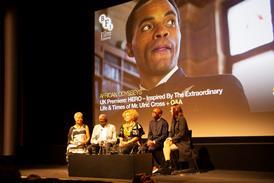
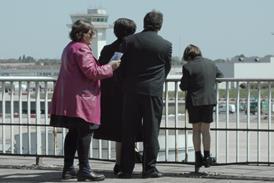


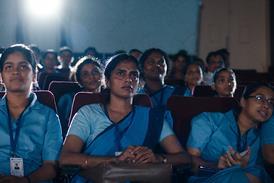

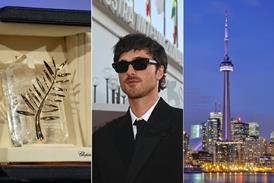




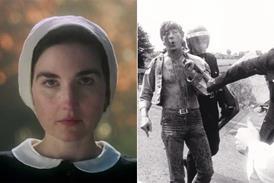




No comments yet